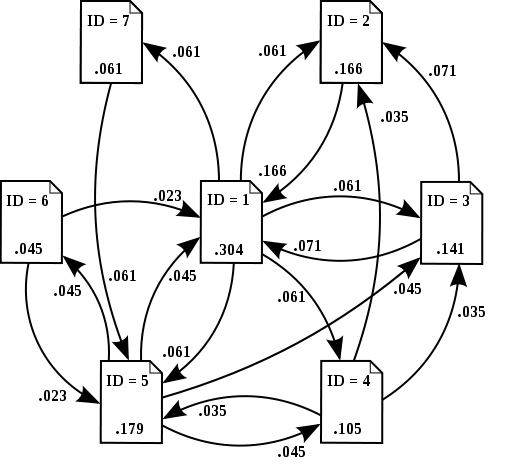PageRank is a probability distribution used to represent the likelihood that a person randomly clicking on links will arrive at any particular page. PageRank can be calculated for collections of documents of any size. The distribution is evenly divided between all documents in the collection at the beginning of the computational process.
For example, assume a small universe of four web pages:The PageRank computations require several passes, called “iterations,” through the collection to adjust approximate PageRank values to more closely reflect the theoretical true value. A probability is expressed as a numeric value between 0 and 1.A,B,CandD. The initial approximation of PageRank would be evenly divided between these four documents. Hence, each document would begin with an estimated PageRank of 0.25.
| A 0.5 probability is commonly expressed as a “50% chance” of something happening. Hence, a PageRank of 0.5 means there is a 50% chance that a person clicking on a random link will be directed to the document with the 0.5 PageRank. |

|
|
Who would survive if Trump and Clinton both were stranded on a island? — America |